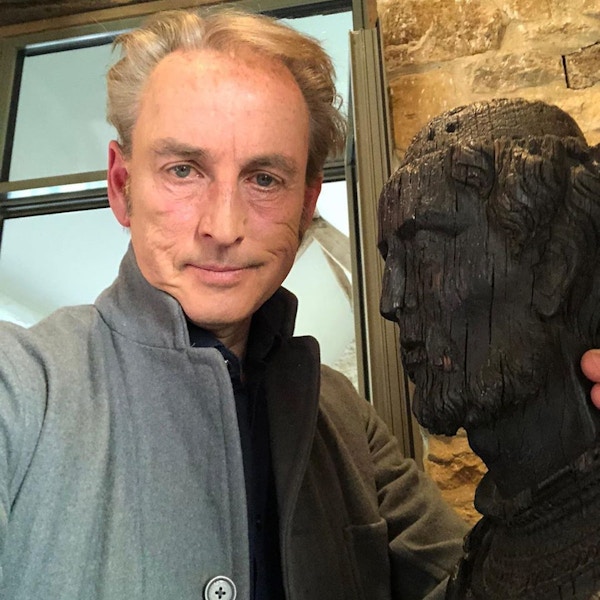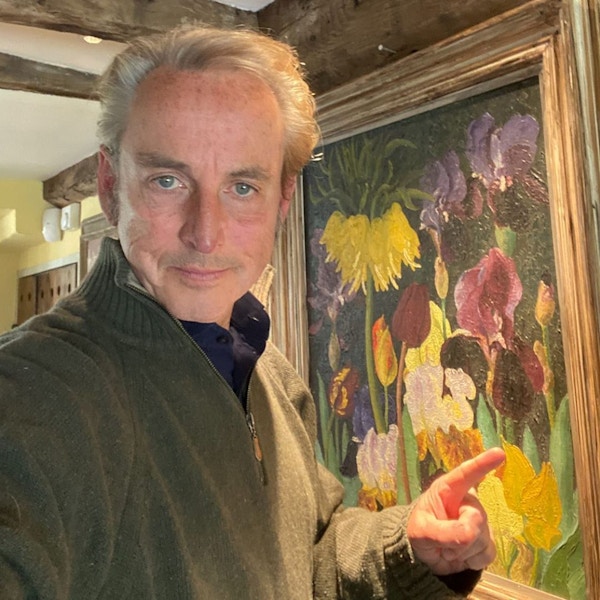
‘It sounds a rather ridiculously rarefied epithet,’ he says. ‘But I believe that one of the most terrifying things that has happened is that social history has taken over from looking. You can be a greatly acclaimed art historian and able to speak for five hours on the artist’s approach to socio-economic issues of the period. But when it’s in front of you and you actually have to say whether it’s real, whether it’s by an assistant, whether it’s the right date, often they’re all at sea. I believe in the supreme value of connoisseurship.’
And that is at the crux of why we love him so. For whilst he does inhabit a wholly rarefied world, he makes it so lively and engaging that he manages to demolish the layer of highbrow exclusivity that puts so many people off before they start. It’s what makes him such a compelling presenter of Fake or Fortune, the TV show where, in each episode, he and Fiona Bruce establish whether a work of art is genuine or an accomplished imitation, or rather by, that catch-all term, a ‘follower’ of a famous artist. As he explains, it’s not the dusty world of academia that attracts him, but the quest for treasure.
‘I was really bad at school, I flunked my A Levels, but I always collected.” As a child I would follow in the wake of drunken rugby fans with his metal collector. On a particularly fruitful slope, I couldn’t move three inches for coins. There was a great antique dealer who lived up the road from us - she smelt of silver dip and furniture polish. Adults loathed her, she used hector them, but she loved children. Loved children! She used to wind them in her web. She’d pick up bits of silver and glass and tell me things about them. The magpie in me thought: ‘Wow’! The quest for treasure – always! I’ve tried to dress it up by representing the strengths of lost artists, but really it’s back to the metal detector.’

Art In Isolation
Another reason to love Philip Mould is his latest venture: Art In Isolation, which you can tune into via his Instagram feed. Broadcasting from his 1620 country house, Duck End, a Royalist household during the Civil War, he shows us round his collection, starting with a portrait that he found in America of Charles I dressed in the regalia of the Order of the Garter. But the pièce de résistance is a painting that Philip’s wife first spotted in a gallery in London. It is of Colonel William Cope (1612-1691), the first resident of Duck End, by Robert Walker and, as he describes, it’s like having a portal to the house’s past, right there in their kitchen. We are riveted by all of the episodes, notably one about the controversial artist Eric Gill and another about Cedric Morris. Plus, we just like exploring the home of the man who makes it his business to discover lost masterpieces on eBay. For Philip great art is pure thrill and we can’t get enough of his obvious, palpable enthusiasm. What a guy! Perfect and inspiring lockdown diversion. Keep them coming.Art in Isolation: Call to camera
Having talked about his own collection and what it means to him, Philip has thrown down the gauntlet and asks you, his followers, to share their favourite works of art, where you could be chosen to be part of a film montage. In order to be considered, Philip asks that images be sent to rsvp@philipmould.comBy Nancy Alsop
May 2020
READ MORE
22 Museums And Galleries You Can Tour Online
Internet Hero of The Week
Instagram Hero Of The Week: Dr Joshua Wolrich


